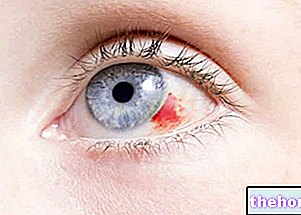What are Photoreceptors
Photoreceptors are nerve cells found on the retina. These elements are sensitive to light waves and perform an important transduction function, ie they are able to transform the light that reaches the back of the eye into information (first chemical, then electrical) to be transmitted to the brain through the optic nerve.
The photoreceptors of the retina are divided into cones and rods. Their structural differences are related to important functional characteristics. Rods, for example, transmit a less clear image, but have more photopigments than cones and are more sensitive in low light conditions. All rods also contain the same photopigment (rhodopsin), while cones they are not all the same. These last photoreceptors have, in fact, three different types of light-sensitive pigments (iodopsins), which guarantee the discrimination of the various colors (each cone of the retina contains only one of the three photopigments). In addition, the cones are responsible for daytime vision and accurately capture details.
Features and functions
Cones and rods are highly specialized cells, which have the function of receiving light and adapting it to transmit it to the brain.
In the process of vision, the photoreceptors divide the tasks:
- The cones are responsible for clear and central vision, allow you to see fine details and are mainly used in daytime vision (photopic) or in the presence of artificial light sources. There are three types of cones, each of which contains a pigment that makes them sensitive to different wavelengths in the visible spectrum; in particular, they have absorption peaks at 420, 530 and 560 nm, which correspond respectively to blue, green and to red.Therefore, the cones are able to perceive colors.
- Rods, on the other hand, have a very high sensitivity to light and allow you to see even at night and in the presence of low light intensity (scotopic or twilight vision). These photoreceptors, however, are unable to build good quality images and are unable to distinguish colors. The rods intervene, in fact, in the achromatic vision, characterized only by white, black and shades of gray.
Cones and rods are therefore complementary and their work in synchrony guarantees perfect vision.


.jpg)

























